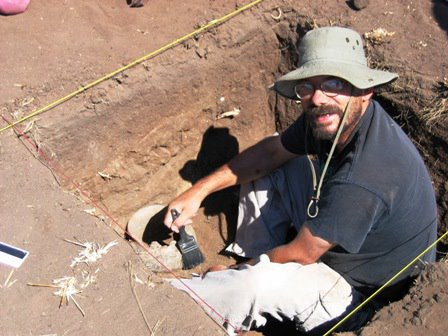(This is Part I of the article I introduced in the previous post. It describes (for a general audience, remember) the issue of IDT as a legitimate alternative to evolutionary theory and asks whether this would have implications for how we manage natural resources.)
Was Darwin Right? And Should the Forest Service Care?
Part I: Nature of the Problem
The yellow pines and white firs of Lassen National Forest in northeastern California may seem removed from the debate over teaching Darwinian evolution or Intelligent Design Theory to high school students, but in fact they are inexorably linked. The popular struggle over which version of science should comprise the foundation of biological thought also directly impacts the foundations of natural resource management. At their core, methods of resource management, be they ecological restoration, fuels reduction, invasive species eradication, selective harvesting or a host of other techniques, are derived from assumptions about the way in which the natural world, specifically forest ecosystems, operate. To the extent that management techniques provide us with a desired result they are successful precisely because they have gotten the underlying assumptions correct.
The assumptions to which I refer, are of course the mechanisms for how species reproduce, compete, adapt and subsequently change through time. Not quite 150 years ago, Charles Darwin referred to this as “descent with modification” and proposed the mechanism of “natural selection” as an explanation for how these processes work. Although the terms have come to have different meanings in different contexts, the broader concept Darwin advanced is more popularly recognized today as evolution. Individuals vary in their characteristics (some are shorter, some are taller; some reproduce faster than others; some resist fire more effectively, etc.) and these are passed from generation to generation. However, because of these character differences, some individuals are better able to cope with changing conditions in the environment. In effect, some individuals are better adapted to their environments and as a result, tend to leave more offspring than those who are less adapted. Over time, characteristics providing better adaptations become more common and the make up of the population appears different. Because many of these adaptations are physically apparent, later generations actually begin to look different from earlier ones. The numerous transitional forms we see in the fossil record, which show accumulated change through millions of years, are best explained by the processes of natural selection.
The reader is probably familiar with the concept of evolution through natural selection (what I refer to as Darwinian evolution), at least on a general level. And unless you have been living in a cave for the last several years, you are probably also familiar with the growing controversy over whether Intelligent Design Theory (IDT) should be taught alongside evolution in public school science classes. The components of IDT vary, but are summarized largely as follows: First, IDT proponents claim there is evidence for design among living organism and that natural selection is not sufficient to account for that design. In effect, there must be a Designer that is responsible for species’ origins. Although such a position has significant religious implications, serious IDT proponents make no claims about who or what the designer might be, maintaining that this question is irrelevant to the methods of revealing design in nature, which they consider a legitimate pursuit. The second component follows directly: IDT proponents claim theirs is an idea fully consistent with the framework of science and is not religious creationism in disguise. Third, IDT proponents argue that Darwinian evolution is flawed and that IDT serves as an alternative explanation for how the natural world operates. Taken at face value, these arguments for IDT would appear sufficient to legitimize it as a theory worthy of discussion in high school biology classes. So what do these two, supposedly legitimate, theories have to do with contemporary natural resource management?
In science, theories are not “educated guesses”, although this is the popular perception. Theories are well-substantiated explanations of some aspect of the natural world. More importantly, theories comprise a body of knowledge against which scientists can test new ideas. In effect, theories should guide practical applications of scientific knowledge. When a significant number of observations repeatedly fail to be explained by the theory, then the theory itself is in need of revision, or outright rejection and replacement by a different theory that better explains the scientist’s observations.
Two questions arise from this line of reasoning. First, does natural resource management rely on an underlying body of theory at all? Are the principles of natural resource management dependent on assumptions derived from more general statements about how the natural systems of the world develop, interact and change? Second, if there is indeed a greater body of theory forming the foundations of day-to-day decisions in natural resource management, then what are the implications if we change that theory? If principles of Darwinian evolution currently form the bedrock of biological thought, then what are the implications for how we manage natural resources if IDT is a viable alternative?
Sunday, July 30, 2006
Subscribe to:
Post Comments (Atom)




2 comments:
ID technically is not a theory, as it can't truely be tested as one can always say "well the designer just designed it that way" just as creationists can say "well god just made it that way."
Enjoyed a lot! »
Post a Comment